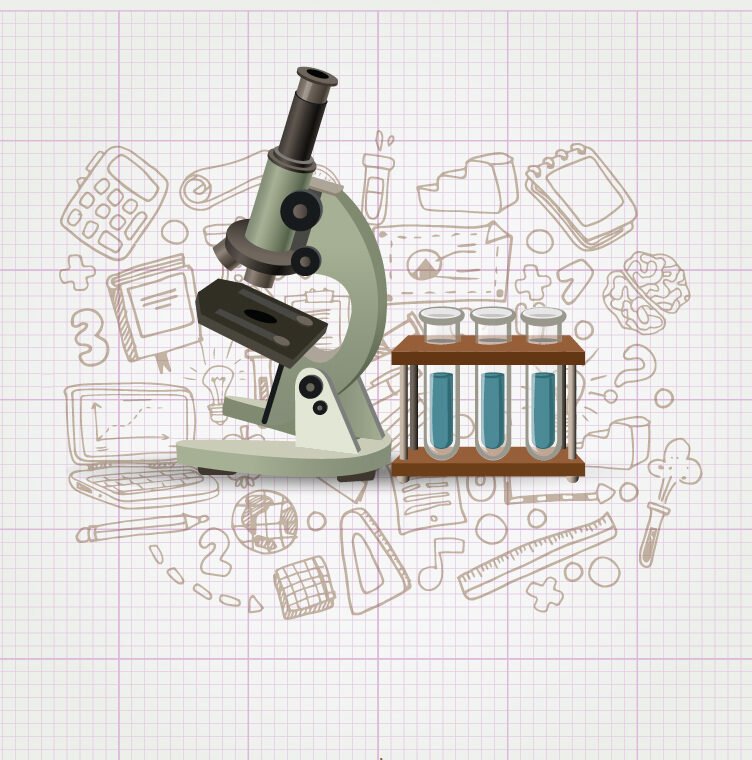The online chemical reaction simulations on this page will help you to better understand how chemical reactions occur and the most important types of reactions. We will look at some important types of chemical reactions such as precipitation, neutralization and acid-base reactions.
What are chemical reactions
Chemical reactions are processes in which the atoms of reactants are rearranged to form new molecules or compounds. These processes are fundamental in chemistry and in everyday life.
Types of chemical reactions
A chemical reaction can be classified into different types, depending on the nature of the reactants and products, and the way in which the transformation is carried out. Some of the most common types are:
Synthesis reactions or combination reactions
In the synthesis reactions, also called combination reactions, two or more reactants combine to form a single product. For example, the synthesis of water from hydrogen and oxygen.
Decomposition reactions
A single reactant is split into two or more products. For example, the decomposition of hydrogen peroxide into water and oxygen.
Substitution or displacement reactions
One element or functional group of a reactant is replaced by another element or functional group. For example, the reaction of an acid with a metal to form a salt and release hydrogen.
Oxidation-reduction reactions
A transfer of electrons occurs between the reactants, and may involve the gain or loss of electrons. For example, the oxidation of iron in the presence of oxygen to form iron oxide.
Precipitation reactions
In precipitation reactions, a solid is formed from aqueous solutions. These reactions occur when two solutions containing soluble salts mix and form an insoluble compound, known as a precipitate. A common example is the reaction between silver nitrate and sodium chloride, which results in the formation of solid silver chloride.
Acid-base reactions
In these reactions, an acid donates protons (H⁺) and a base accepts protons. This type of reaction is fundamental in many areas, including industrial and biological chemistry. An everyday example is the neutralization of hydrochloric acid in the stomach with antacids, which contain bases such as sodium bicarbonate.
Combustion reactions
A compound reacts with oxygen to produce carbon dioxide, water and the release of energy in the form of heat. For example, the combustion of hydrocarbons in engines.
Each type of chemical reaction has specific characteristics. For example, synthesis reactions tend to be exothermic, while decomposition reactions tend to be endothermic.
Examples of chemical reactions in everyday life
Chemical reactions are present in many aspects of our daily lives.
Photosynthesis
Photosynthesis is a synthesis reaction where plants produce glucose and oxygen from carbon dioxide and water with the help of sunlight.
Hydrocarbon combustion
Another example is the combustion of hydrocarbons in car engines, an oxidation-reduction reaction in which fuel reacts with oxygen to produce carbon dioxide and water, releasing energy in the form of heat.
Reactions in cooking
We also find decomposition reactions in cooking, such as when baking a cake in the oven decomposes baking soda into carbon dioxide and water, which helps the cake rise.
Reactions in the human body
Acid-base reactions are present in our body, such as the neutralization of hydrochloric acid in the stomach by bicarbonate in the intestine. Another fundamental example is the reaction of cellular respiration. During respiration, cells convert glucose and oxygen into carbon dioxide, water and energy. This process is essential for the production of energy that our body needs to function.
Cleansing products
Precipitation reactions are common when we mix certain solutions to clean lime from pipes, forming solids that can be easily removed.
Explore the exciting STEM world with our free, online simulations and accompanying companion courses! With them you'll be able to experience and learn hands-on. Take this opportunity to immerse yourself in virtual experiences while advancing your education - awaken your scientific curiosity and discover all that the STEM world has to offer!
Simulations of chemical reactions
- Precipitation
- Neutralization
- Rate
- Acid-Base
Precipitation reactions
In this first example of chemical reaction simulations, we can see a precipitation reaction. In a precipitation reaction, two soluble compounds react to form an insoluble solid that precipitates in the bottom. This simulation allows you to select several compounds and observe their reactions.
Neutralization reactions
In this new case of chemical reaction simulations, we are going to study a neutralization reaction. In a neutralization reaction, an acid and a base dissolved in water react to produce a salt that remains dissolved in the water. This simulation allows you to select various combinations of acid and base and observe their reactions.
Reaction rate
In this simulation it is possible to observe how the concentration of the initial compounds and that of the final compound vary in a reaction.
Acid-Base reactions
In the last of these online chemical reaction simulations, we are going to study acid-base reactions. How different strong and weak acids are? Use the tools in the computer lab to find out! Dip the paper or meter into the solution to measure pH, or use the electrodes to measure conductivity. Then observe how concentration and strength affect the pH Can a solution of a weak acid have the same pH as a solution of a strong acid?
File
Giants of science
“If I have seen further, it is by standing on the shoulders of giants”
Isaac Newton

Antoine-Laurent de Lavoisier
–

Marie Curie
–
Become a giant


Big Bang and the Origin of Chemical Elements



Pre-University Chemistry



Preparing for CLEP Chemistry: Part 1



Introduction to Solid State Chemistry



























